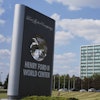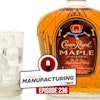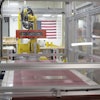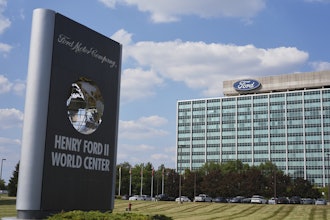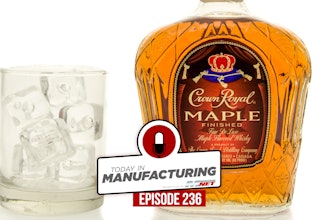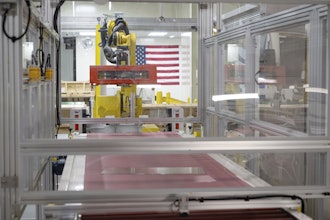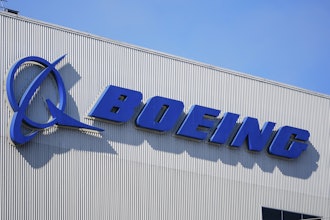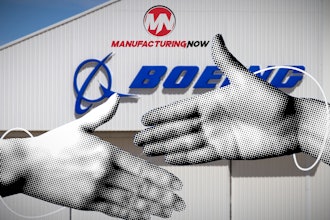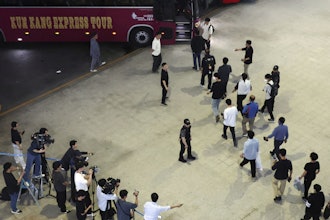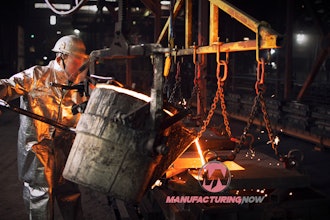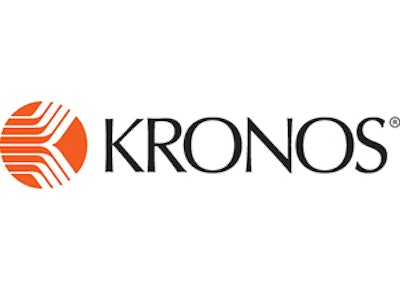
Written by: Gregg Gordon
Copyright © 2011 Kronos Incorporated.
All rights reserved. No part of this book may be reproduced or transmitted in
any manner without permission of the author.
ISBN: (13 digit) 978-0-9777357-07-9
ONE WORLD PRESS
890 Staley Lane
Chino Valley, AZ 86323
800-250-8171
www.oneworldpress.com
on behalf of Kronos Publishing
a division of
Kronos Incorporated
297 Billerica Rd.
Chelmsford, MA 01730
+1 (978) 250-9800
Book and cover design: Nic Valentino
Table of Contents
Introduction .......................................................................................... VIII
Chapter 1 Placing a Value on the Workforce ............................................. 1
Chapter 2 Delivering the Perfect Paycheck ............................................... 11
Chapter 3 Managing Premium Pay ........................................................... 37
Chapter 4 Balancing Labor and Demand .................................................. 45
Chapter 5 Using Labor Information to Make Operational Decisions ............. 61
Chapter 6 Increasing the Productivity of the Entire Workforce .................... 81
Chapter 7 Improving Daily Operational Decision Making ............................ 93
Chapter 8 Labor Costing as a Competitive Advantage ................................ 101
References ............................................................................................ 111
Glossary ................................................................................................ 117
VIII
Introduction
I always look forward to watching “How It’s Made” - a television show that goes on
site to different manufacturers and films the production process. “How It’s Made”
has taken my favorite part of visiting a manufacturer, the production tour, and con-
densed it into a narrated, step-by-step 10 minute segment. The show documents a
company’s manufacturing process from issuing raw materials to packaging a finished
product.
I wonder if the show’s producers realize that in editing the actual video to fit into the
show’s time constraints, what they have really done for the manufacturer is provide
a vision of perfect execution. During each segment, machines never break down,
there’s never a “cut to commercial” waiting for a critical operator to arrive, and mate-
rial never warps ruining a production run. It’s a production manager’s dream, every-
thing goes according to plan.
With “How It’s Made” providing this vision of idealized production, is it possible for
a manufacturer to transform its processes to achieve the perfect day, every day?
There’s good reason to consider this; developed countries have been losing manu-
facturing jobs at an alarming rate over the past two decades to low-wage countries
such as China and Mexico. Even China, with what many consider to be extremely
low wage workers, is not immune to the impact of even lower-wage competition. A
second generation of modern industrial workers is entering the job market in China
with an increased standard-of-living expectation. These young workers see how others
live in high wage countries and the resulting desire for an improved standard of living
is driving up wages. With a global supply chain already in place, it becomes relatively
easy to move low skill production jobs out of China just as quickly as they moved in.
Without a transformation in the way manufacturers produce goods and deliver ser-
vices, manufacturers are relegated to chasing the lowest wages, moving production
IX
from country to country. They seemingly have no choice, forced out as wage increases
due to inflation and government regulation make them un-competitive in their exist-
ing plants.
When it comes to executing this transformation, companies don’t have to re-invent
the wheel. There is a wealth of information available to guide companies on how to
improve their processes. The bigger challenge is how to motivate the workforce to
change. What’s required to successfully move towards ideal production is not a single
big change, but hundreds of small changes implemented at all levels by all employees.
Combined, these changes have a dramatic effect on costs and lead times.
One methodology has recognized the importance of placing the workforce at the
center of a manufacturing transformation: Lean. Lean has done so by recognizing
that the people who do the work are the same ones who will originate the ideas for
improvement and put them into place.
Lean, a continuous improvement methodology, is built upon three pillars: Purpose,
Process and People:
• Purpose: The reason the company exists.
• Process: The method a company uses to add value to its product and
services.
• People: The people that participate and improve the process.
Companies applying Lean have the same goal as the production editor of “How It’s
Made.” The production editor cuts away at what the film crew captured until just
enough remains to educate the viewer about how a product is made. Lean companies
perform a similar act when they analyze their processes with the objective of remov-
ing those activities that are not adding value to the customer. Lean’s power is in the
simplicity of its objective: If an activity adds value – keep it; if it doesn’t – eliminate it.
Lean has been steadily growing in popularity over the past two decades. It is a cul-
mination of the many improvements to manufacturing processes that started with
Henry Ford who in 1913 integrated an entire production system to produce the fa-
mous Model T. The production of the Model T was efficient because there were no
changeovers in production. With only one model in one color, the production line
could be optimized for that one type of car. In the late 1940’s as customers demanded
more variety in cars, Toyota recognized there were ways to maintain similar efficien-
cies in production while offering more choices to their customers. Toyota began cre-
ating the tools and techniques to improve production and change from a “push” to
Xa “pull” philosophy where they built cars based on current demand rather than on
forecasts. As these ideas matured, they became the basis of the Toyota Production Sys-
tem (TPS). Disciples of the Toyota Production System maintain the same philosophy
today, believing it’s the people that can improve a company and everything else is a
tool to support those efforts.
In 1990 James Womack, Daniel Roos, and Daniel Jones published “The Machine that
Changed the World,” the first book that completely describes the thought process of
Lean. Womack’s continued efforts over the past two decades since the book has been
published have made Lean the most popular continuous improvement methodol-
ogy available. In 2007, Industry Week published a survey among manufacturers that
ranked Lean as the number one continuous improvement methodology, with 40.5%
of respondents using Lean at their companies. Because these techniques apply to all
processes, Lean continues to gain popularity as it spreads to other industries such as
healthcare and financial services.
Lean thought processes inspire companies to look for improvements in ways that
have often never been considered before. This is a reason such significant gains can
be realized even in mature and what are thought to be highly efficient processes:
Lean follows a process without respect to the functional organization of a company.
It uses the neutral eyes of the customer to identify opportunities for improving a
process, eliminating the well-meaning but costly localized improvements that benefit
one department at the cost of another. Lean has a simple litmus test: If the activity is
not adding value to the end customer, find a way to minimize or eliminate it to make
product flow easily through production.
While Lean provides significant benefits for companies, it does not deliver these
improvements by working employees harder. Since the industrial age began, com-
petition between manufacturers has forced companies to continually find ways to
take costs out of their processes. These efforts have often resulted in loss of jobs
through automation in order to reduce labor costs, or a faster pace of work to increase
throughput and shrink unit cost. In contrast, companies that practice Lean rely on
their employees who know the process best to identify unproductive activities and
replace them with productive ones. This additional productive time results in higher
output with the same pace of production using the same capital equipment. For
manufacturers looking to reduce unit cost, especially with limited capital investment,
Lean can be the answer.
While companies understand the importance of people to the success of a Lean
program, many companies approach their process from an inventory and equipment
XI
perspective. This book will instead focus on the workforce and its interaction with
the other resources required for production. We follow Graham, a production execu-
tive at a manufacturer who is challenged to reduce his company’s product unit cost
by 10% in a year. Along with Graham’s story, we describe ideas, techniques and ex-
amples of how manufacturers have changed the way they manage the workforce and
then standardize those changes through the use of technology. I hope that Graham’s
story and the techniques and examples we offer can help you gain similar benefits.
1The red light on Graham’s Blackberry was blinking. It was just after eight in the eve-
ning and he had promised his family no email at night, but Graham knew the board
of directors met today for what promised to be a tough meeting and he couldn’t resist
looking.
“Please stop by first thing in the morning – Spencer.”
Getting a message like that from the CEO was not a good sign. Graham was respon-
sible for operations and an offshore competitor had recently lowered pricing in the
market by almost 10%. The loss of revenue due to that competitor taking market
share had reduced earnings and the stock had dived last quarter.
The next morning Graham checked in with Spencer’s assistant and walked into the
CEO’s office.
“Graham, I was given a choice yesterday: Reduce our unit costs by 10% or pack up
the equipment and move this division to China. I need your help here. Do you think
10% is achievable? The board is serious about this. Investors are pressuring them to
do something immediately to get the share price up. If we don’t come back with a
plan, we’ll have to announce our intentions to shift production offshore.
Graham’s stomach started to churn. This was not the first time he’d been under pres-
sure to reduce costs. The first couple of times weren’t too bad. Two years ago the com-
pany had completed their strategic sourcing effort which had shaved 5% off material
prices and cut inventories by 10%. Last year Graham had the painful task of cutting
10% out of the workforce. Employees were still grumbling about doing more work for
the same pay level, but overall they had absorbed it. To go back again and reduce unit
costs by 10% was going to be difficult. Even more difficult would be telling everyone
their jobs would be moved offshore. Graham told Spencer he would find a way.
Placing a Value on
the Workforce
Chapter 1
2Lean Labor
The board wanted monthly updates, so Graham had to get started right away and
begin showing progress soon. He sat down and started penciling out the drivers of
unit cost.
Millions have lost jobs that have moved overseas from high labor cost countries in
North America, Australasia and Europe.
Since 2000 more than 5 million manufacturing jobs have disappeared from the Unit-
ed States due to low wage competition and automation. In many industries the jobs
have moved to countries where products, including shipping costs can be produced
at a lower cost based on wages that are a fraction of those paid in the United States.
Manufacturing employment in the United States from 2000 to 2010.
But does an individual who works in China have any more security than an employee
in the U.S.? As the cost of living rises in China, countries such as Bangladesh, who
pay production employees half of what is paid in China, become the new low cost
leaders.
But even manufacturers in Bangladesh are finding that competitive advantage based
on low wages is not a sustainable strategy. In its article “Bangladesh, With Low Pay,
Moves In on China,” The New York Times interviewed Anisul Huq, the former head
of the Bangladeshi garment industry’s trade group and a factory owner. Commenting
on a proposal from the government to increase the monthly wage from the current
level of $24, Huq predicts many apparel manufacturers in Bangladesh will go out
of business within months if the minimum wage is doubled. Garment workers are
demanding an even larger increase of three times the current minimum wage, which
is what an experienced worker now earns.
For manufacturers in Bangladesh, the limited transportation infrastructure increases
3Placing Value on The Workplace
the cost of shipping. The lack of local suppliers requires importing expensive fabric.
It’s these higher costs that drive factory owners to push down wages to compete with
other countries. These businesses have no control over building infrastructure but in
a country with limited labor protections, they do have the ability to hire employees
at very low wages and keep them depressed. For employees, a low wage job may be a
better alternative to no job at all.
Staying globally competitive by driving wages down is not the only answer. In the ar-
ticle, Huq acknowledges that manufacturers in Vietnam are more efficient producers
and can afford to pay better wages due to their higher levels of labor productivity. For
all manufacturers, higher wages can be supported if productivity is increased.
While companies have limited control over their country’s infrastructure or the sup-
plier base, they do have the ability to improve productivity that in turn can support
maintaining and even increasing wages. As demonstrated by manufacturers in Viet-
nam, an increase in labor productivity can eliminate the drive to find the lowest
wage employees. These high productivity companies are also more resistant to outside
forces such as governments legislating increases in the minimum wage or other em-
ployee benefits as was the case in Bangladesh soon after the New York Times article
was published.
For most manufacturers this is not a revelation. There has always been a push to
increase productivity within manufacturing. But even with those efforts to improve
productivity, jobs continue to be lost to lower wage countries. What this trend points
to is the larger challenge: While labor may be the most controllable resource for a
manufacturer, it is also the most difficult to manage.
Resources such as machines and inventory are inanimate objects with well under-
stood attributes. It’s easy to calculate the benefit of reducing inventory in terms of
improved cash flow or the return on investment by increasing throughput using au-
tomation. When it comes to labor however, the analysis becomes murky. There are
many attributes that affect performance and as a result the return on investment is
difficult to measure. Understanding the potential in an existing workforce, or in a
workforce that is about to be acquired is almost impossible to predict.
For a company that depends on layers of supervisors and managers using manual
processes to manage its workforce, the only consistent facts an executive has when it
comes to the current value of their workforce is the company’s unit labor cost. Similar
to any other resource on the balance sheet, the workforce can be analyzed in fiscal
terms; value of output divided by cost. There is a price to be paid for this simplifica-
tion though; the workforce, unlike any other resource, has the ability to innovate and
4Lean Labor
develop new ideas and processes. This value is not described in the general ledger
and without additional facts, the value and potential of a workforce is difficult to
measure.
The challenge in measuring the value of the workforce does not mean the workforce
doesn’t offer an opportunity for a company to increase its value. Because different
companies manage their workforce with varying degrees of success there is variation
on the financial return of an investment in the workforce. Those companies that ef-
fectively manage their workforce and the intellectual property (IP) the workforce cre-
ates will enjoy higher returns than competitors that don’t effectively capture that po-
tential. This return is not easily duplicated. A workforce based competitive advantage
is far more valuable than any advantage based on a temporary gain from something
available externally in the market. The reason for this is simple. Whoever is providing
those external resources will see the value they are delivering and begin marketing
those advantages to others. Internally developed intellectual property is much more
difficult to duplicate because no one is selling it on the open market. This ability to
innovate is a skill and as this skill is used, the workforce gets better at it, increasing
the pace and impact of innovation. This workforce driven innovation is a sustainable
competitive advantage.
While the workforce is regularly lauded as the most valuable resource within a com-
pany, it also holds a more dubious honor. The workforce is the most difficult resource
to manage. Here’s why:
• Their costs fluctuate without correlated changes in output.
• As a link in a supply chain where predictability translates directly into
superior performance, employees are unpredictable.
• While substitutable, employees are not interchangeable.
• Companies are subject to new employee regulations from the government;
generally adding cost.
• Turnover and retirement can make a valuable resource disappear
overnight.
So while other assets such as machines and materials have predictable costs and per-
formance, the workforce is highly variable in both cost and output. This range of
performance presents an opportunity for manufacturers. Companies that reduce the
variability of the workforce while still providing a fair and equitable place to work
will receive more value from their workforce than those companies that do not. And
5Placing Value on The Workplace
while inventory costs can only go to zero and a machine can only achieve its theo-
retical limits of throughput, the new ideas and productivity gains achieved internally
through workforce innovation never stop.
The challenge is that managers don’t have the luxury of building a labor friendly en-
vironment and waiting for the innovation to occur. A company’s investors know that
the fruits of innovation will be reflected in the unit cost of the company’s product
or the successfully differentiated offerings that increase revenues. Customers are not
patient either. They are buying current value: high quality, shorter lead times, lower
unit cost and predictable delivery; not a promise of future excellence.
Graham wrote down the familiar formula for unit cost:
He promised himself to keep an open mind. Over the last couple of years his team
had been using Lean techniques. Some of the results were amazing and others had
not worked out.
Because of the time crunch, Graham made some simplifications to the numbers that
represented unit cost.
Revenues = $1,145,000,000
Material Costs = $350,000,000
Direct Labor Costs = $200,000,000
Overhead Costs = $400,000,000
Units Produced = 500,000
Employees = 7,000
As he worked through the numbers, Graham started thinking about all the ideas that
had been offered and then faded over the years. The proposed gains from many of
these ideas seemed too small, the process changes were too big, or a department
6Lean Labor
claimed it would be impacted negatively. For many different reasons these ideas had
been shelved.
Graham understood that one of the fundamental advantages of Lean was that rather
than focusing on working harder, Lean practitioners look for activities that don’t add
customer value. The big returns come when those activities are eliminated and the
resources are directed toward producing things that customers do value. Recently
a consultant came in to provide a seminar and he had offered a new spin on the
traditional views of Lean. He suggested that companies had focused too heavily on
three of the four M’s (Machines, Man, Materials and Methods) of production. While
Machines, Materials and Methods were important, too often the changes required
of Man (this represents both women and men he explained) were driven by changes
made to optimize the other three M’s. As the most flexible of all the four M’s, the
activities of the workforce were designed to accommodate every other resource. If the
process is truly changed for the better, this works fine. But when Methods, Materi-
als and Machines are changed and not improved, those costs are not eliminated but
rather transferred from the other three M’s to Man.
The consultant described a situation where a company purchased lower quality mate-
rials from a supplier that still met engineering specifications. As a result the operators
had to slow the machines down slightly to obtain high levels of quality. Labor hours
per unit were up but the cause was hard to identify because while the material had
degraded in quality, it was still within specification. The product designers had opti-
mized the design specifications around functionality, not production cost.
There are many ways that different departments and suppliers lower their costs but
really just transfer those costs to production labor. As these inadvertent “cost trans-
fers” accumulate over time, the common denominator is that labor costs increase,
negating true productivity gains. This can make it seem like labor costs are increas-
ing while other areas are doing a good job in controlling their costs. As a result labor
becomes a lightning rod for targeting cost reductions. Why track down and fix all the
contributing factors of cost increases when it is easier to focus on reducing costs
by moving the current production processes to a low-wage country and immediately
reduce unit cost solely through labor savings?
The consultant had a different approach to this situation. He suggested that rather
than trying to identify the contributing costs by looking at the machines, materials
and processes, manufacturers should focus on labor to see how they are spending
their time creating waste and track it back to the root cause. He called this approach
Lean Labor. It was a unique approach because manufacturers always track labor care-
7Placing Value on The Workplace
fully when time is spent on value added activities such as production. But indirect
labor and non-productive hours are where significant waste can occur, and are typi-
cally not measured as accurately.
By extending Lean concepts into Lean Labor, the traditional descriptions of Lean
tools and techniques begin to evolve. For example, Taiichi Ohno, Toyota’s chief en-
gineer, created seven categories to describe how resources can be wasted. These have
evolved into the Seven Wastes of Lean. By viewing these wastes from a workforce per-
spective, this description can expand to include workforce specific activities. Below
is an example of the traditional description of the Seven Wastes of Lean with Lean
Labor extensions bolded.
• Transport
• The unnecessary movement of materials.
• Unnecessary movement of people such as call-ins.
• Inventory
• Excess inventory not directly required for current orders.
• More people than required for current orders.
• Motion
• Extra steps taken by employees because of inefficient layout.
• Manual paper processes that can be automated such as timekeeping.
• Requiring individuals to check information regularly rather than alert-
ing them when action is required.
• Waiting
• Unexpected delays that extend cycle time and cause the resources such
as people and materials to wait unproductively.
• Processes that build in waiting time. This wait often occurs due to a
sub-process that must finish before the main process can start again.
• Scheduling an individual who is not available due to vacation or previ-
ously working in another area.
8Lean Labor
• Unplanned absenteeism.
• Too few skills or experience to efficiently perform a process.
• Overproduction
• Making more of something than is required by current orders.
• Using a person too highly skilled (with corresponding higher pay) for
a specific role.
• Providing too much information to individuals, causing them to
search through this detail for the information they require.
• Over Processing
• Time spent reworking a product or redoing a process.
• Entering data multiple times into different systems.
• Decisions that are made, questioned and then reviewed again because
of ambiguous supporting information.
• Defects
• Production that does not conform to expectation.
• Payment to employees that is not intended.
• Expired or missing employee skills and certifications that cause qual-
ity and performance issues, safety hazards or regulatory infractions.
Reviewing the notes he had taken during the consultant’s seminar, Graham was a
little skeptical that he would be able to achieve his goal through labor improvements.
With an average unit cost of $1,900, direct labor was only 21% of product cost when
overhead was included. As he reviewed the consultant’s list of wastes, some of the
ideas generated within the company that had been previously suggested and dis-
carded came to mind. Graham began listing these ideas, targeting each component
of the unit cost, but this time with a focus on labor impact.
Materials
• Reduce extra inventory required to buffer operations due to labor delays.
9Placing Value on The Workplace
Labor
• Eliminate errors in calculating payroll.
• Eliminate unnecessary labor hours.
• Reduce the unplanned or unknown absences.
• Improve the labor scheduling processes.
• Improve the ability to make decisions on the production floor.
• Improve the ability of individuals to react to daily production changes.
• Improve safety and compliance to reduce costs and lost time.
• Introduce flexible work hours to reduce premium pay.
Overhead
• Reduce the time supervisors spend on tracking labor.
• Apply Lean to processes outside of production.
Units produced
• Reduced labor related machine downtime.
With Lean Labor a manufacturer doesn’t have to possess the advantage of the low-
est labor rate in its industry to remain competitive in a global market. The concept
is simple: labor is only one of the resources required to manufacture a product. The
other two are machines and materials, all combined through a proprietary process.
Those companies that understand how to make that combination more productive
will reduce their unit costs and lead times beyond a competitor who brings the soli-
tary advantage of low cost labor.
Graham had so far focused on the benefits of Lean Labor as it applies to daily produc-
tion. What he didn’t factor in is one of the outcomes of Lean Labor is a workforce that
enjoys an environment that is fair and equitable. It doesn’t mean every employee is
happy with every rule and its consequences. But knowing all the rules and applying
them consistently and transparently means everyone has the same opportunities and
this is a critical component of empowering a workforce.
10
Lean Labor
It was now the end of the day and Graham took a look at the list of ideas he had writ-
ten down. The first one that struck him as an easy target was payments made in error
to employees. He wasn’t quite sure how big that could be, he had never had an error
in his paycheck and the special checks and petty cash he approved were always for
legitimate errors the company had made in calculating pay. But the idea came from
payroll and admittedly, he hadn’t thought much about it.
Graham made a call and set up a meeting the next morning with the director
of payroll.
